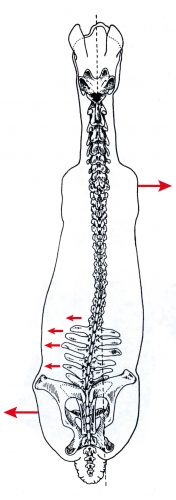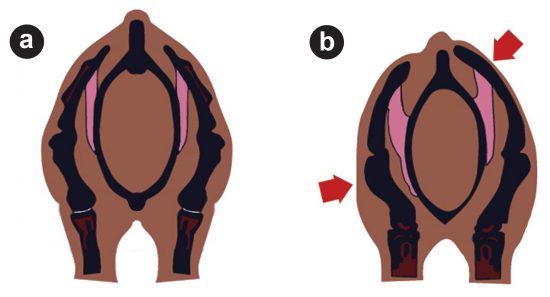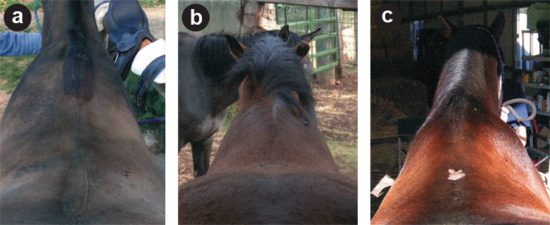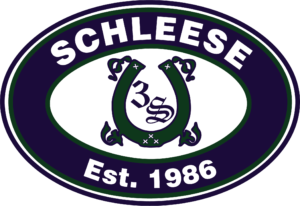Equine Asymmetry and Saddle Fit
If you had a child with scoliosis, or one leg shorter than another – would you force them into wearing ‘normal’ shoes because you were under the misguided view that you could ‘force’ them to walk straight, to be even and to look balanced? I really don’t think that there are any parents out there who would do that; no – you would probably provide your child with the orthotics he/she needed in order to achieve this balance. Am I right?
This blog had to be written as a response to a recent hugely long and contentious post that was on Facebook, started by a saddle fitter who sells saddles for several other companies, but who is sadly misinformed when it comes to the topic of fitting to accommodate equine asymmetry. Unfortunately, she is not alone, as there are many other equine professionals out there who for some reason refuse to accept the facts and consider that how we fit saddles is just one way to address this issue. It’s a well-known fact that if something can be portrayed as being questionable, the reader/listener may not bother examining it any closer to determine whether or not the ridicule is justified. This works because of the primitive parts of the brain called amygdalae that control basic emotional reactions. Stimulating the amygdalae can shut down the analytical part of the brain. Making a person or idea the target of mockery gives it lower status – and thousands of years of evolution means that a good dose of mockery can still shut down critical thinking.
Equine asymmetry is not in question, I don’t think – of course one of the tenets of the scala in classical riding is to ‘ride the horse straight’, but sometimes the horse needs a little help. (as does the rider, because if the horse is not symmetrically muscled and ‘straight’, then the saddle – if not adjusted properly – will not allow the rider to sit straight when the horse begins to move).

As previously noted in many of our written articles, most horses are ‘left-handed’ (i.e., bigger shoulder muscles on the left). This asymmetry may not only be due to increased musculature on the one side, but may also have its origins in the skeletal structure. There are many theories as to what leads to this asymmetry, but I won’t go into the arguments for or against these. Whether genetic, environmental, due to training or nutrition – the fact is that this asymmetry does exist.

It is surprising to us that there are still saddle companies and saddle fitters out there who claim that a) they can fix asymmetry on a horse in a matter of minutes; b) still insist that shimming is the ONLY way to address asymmetry; and c) are unwilling to even consider that there are other methods (just as effective – if not more!) to fit an asymmetrically muscled horse. These fitters have occasionally come across saddles which were adjusted asymmetrically at the tree points by Schleese fitters – for a specific horse as an interim solution – and for whatever reason (a) they don’t understand the concept; b) they can’t adjust the saddles they wish to sell asymmetrically other than by shimming; and c) their ‘hidden’ agenda is of course to ‘diss’ our product and sell their own. They manage to cause doubt in the client’s mind (“Omg – your saddle is twisted!”) – especially if the rider happens to have bought the saddle second hand and doesn’t know or doesn’t understand why the saddle has been previously adjusted asymmetrically for another horse! – that they have now bought what they term ‘a crooked saddle’.
If a symmetrical saddle is used on an asymmetrical horse, the larger and more rearward shoulder (usually the left one) causes the saddle to twist and/or rotate toward the side of the smaller and more forward shoulder (usually the right). The gullet plate of the saddle has to fit the profile of the horse’s shoulder-wither area – matching it in width and angle. If a horse is asymmetrical and the saddle fitter is able to open the gullet plate on the larger side to accommodate the larger shoulder, the saddle will stop slipping (twisting/rotating) and won’t ride on the horse’s spine. The rider can now be straight, and if the riding is correct the horse will bring its back up and use it, engage his hind end and begin to lift its front end up. Now there is finally a chance for the rider to help make the horse straighter, and when the horse is measured and found to be even, the gullet plate is brought back to symmetrical, where it can stay as long as the horse remains even. That is the key point – asymmetrical adjustments, whether using shims, adjusting the panel flocking, or bending the tree points more on one side than the other – are intended as interim solutions only.
If the horse has a larger left shoulder, then the saddle will sit straight in the static fit but in the movement the larger left shoulder will push the saddle to the hollow side (the right side). In this case you need to do an adjustment on the saddle by opening the left tree point of the gullet by ‘x’ cm and supporting the right by the same amount of ‘x’ cm as well. This way the saddle has an opening on the left side and room for the larger left shoulder to come through without pushing the saddle to the right during movement. More ideal would be the asymmetric adjustment to accommodate the larger shoulder but not many saddles can actually be adjusted in this manner, so an even adjustment which ensures the larger shoulder has enough room to move – and a shim under the other, smaller shoulder – will also do the trick.

We have seen upwards of 150,000 horses on pretty much every continent. The majority of them had a definitely stronger muscled left side, with a shoulder blade that was higher and further back than on the right.

This becomes very obvious during dynamic movement – pushing the saddle over to the right if it has not been properly adjusted to accommodate this larger shoulder. And as a result, causing the rider to sit out of balance, crookedly, and compensating by somewhat leaning to one side. You’ll notice the left canter lead is much easier. We lead on the left, we mount from the left, we saddle from the left. When horses fight, the defense is to turn the left shoulder to the aggressor. Interesting isn’t it? So why fight the logic behind an adjustment which is intended to help the rider sit in balance on a saddle which has been fitted properly to allow the horse to be ridden evenly, correctly, and ‘straight’?
And in closing, a lovely quote from a dear friend. “Those convinced against their will are of the same opinion still”. You can lead a horse to water…
©2017 Saddlefit 4 Life® All Rights Reserved
